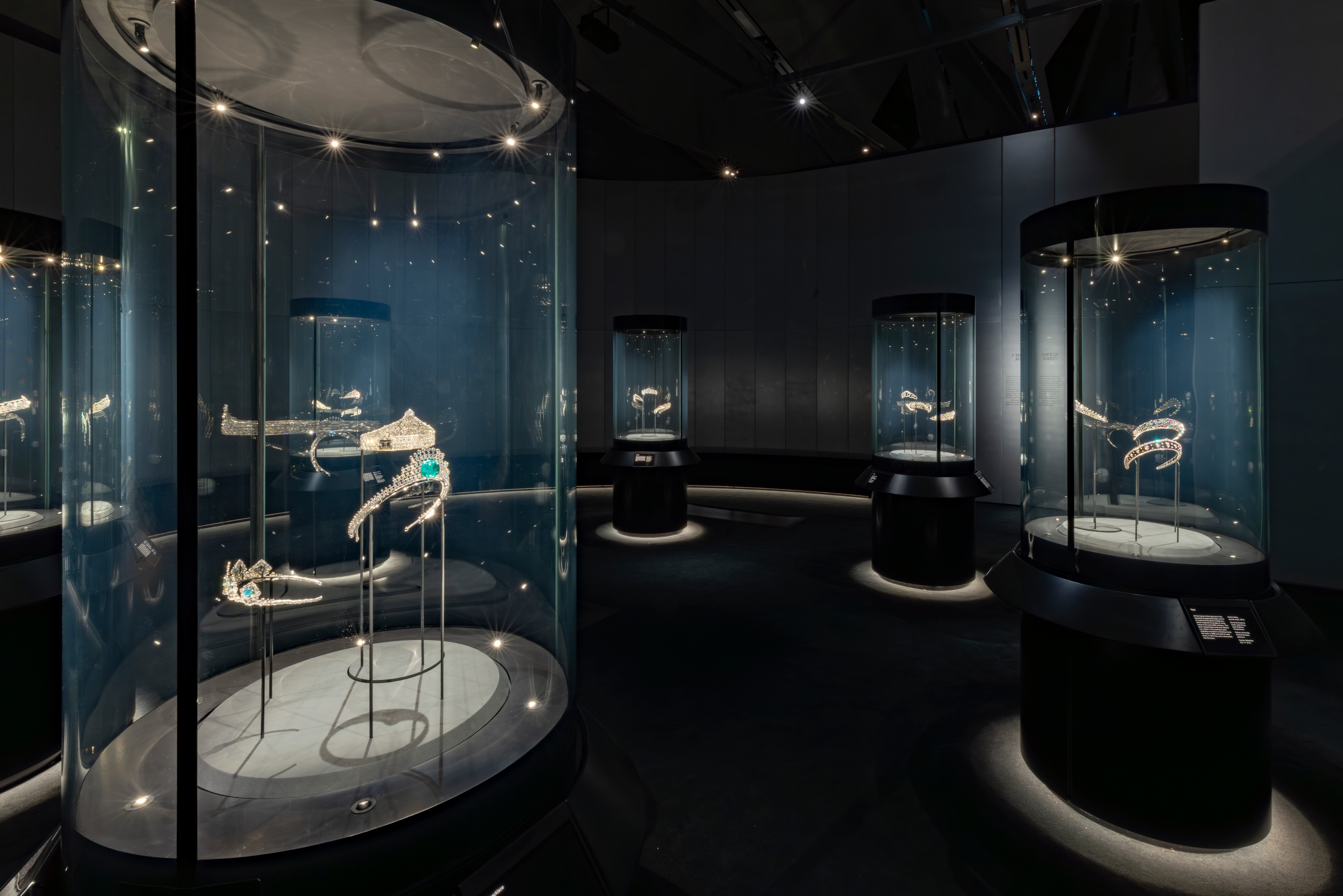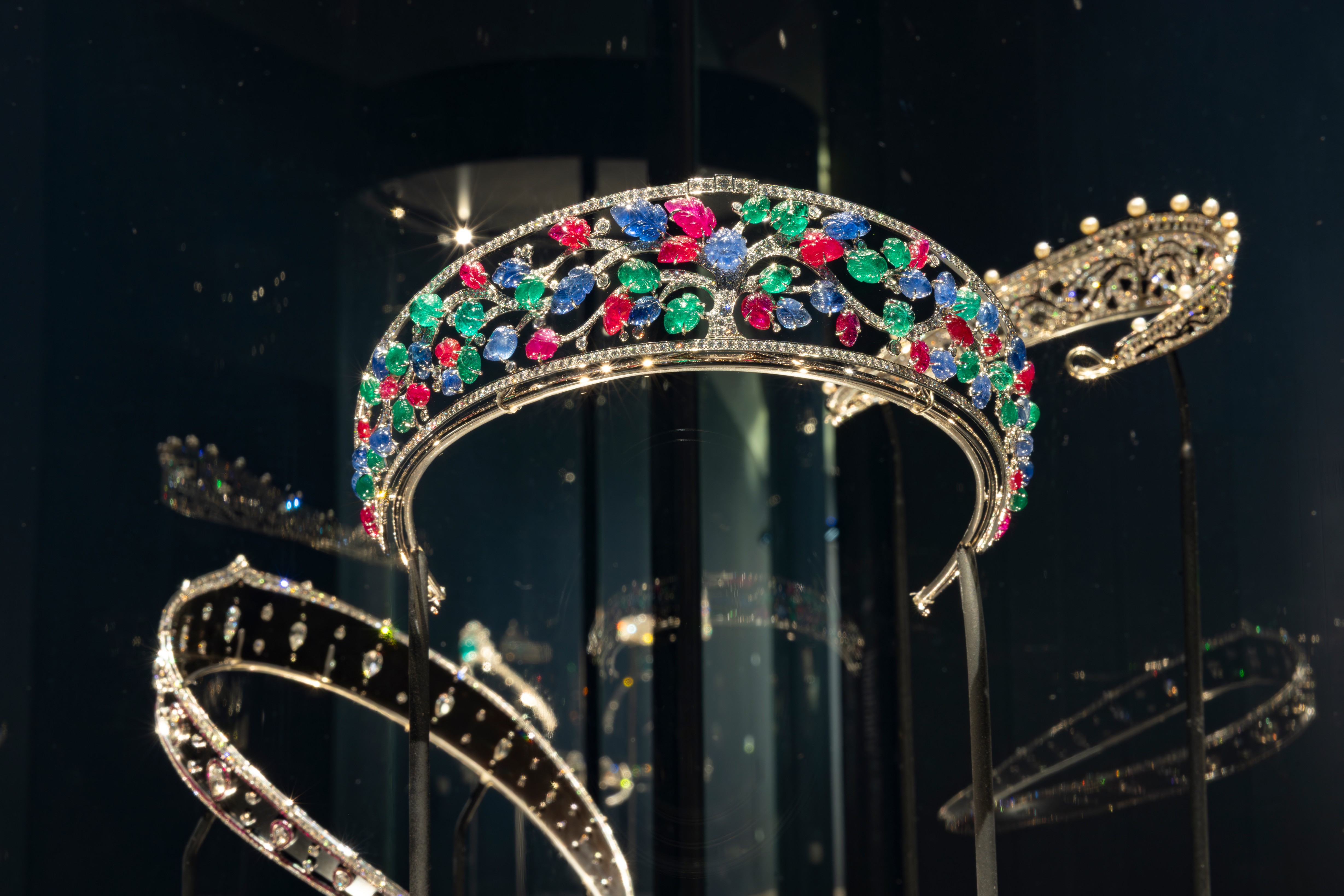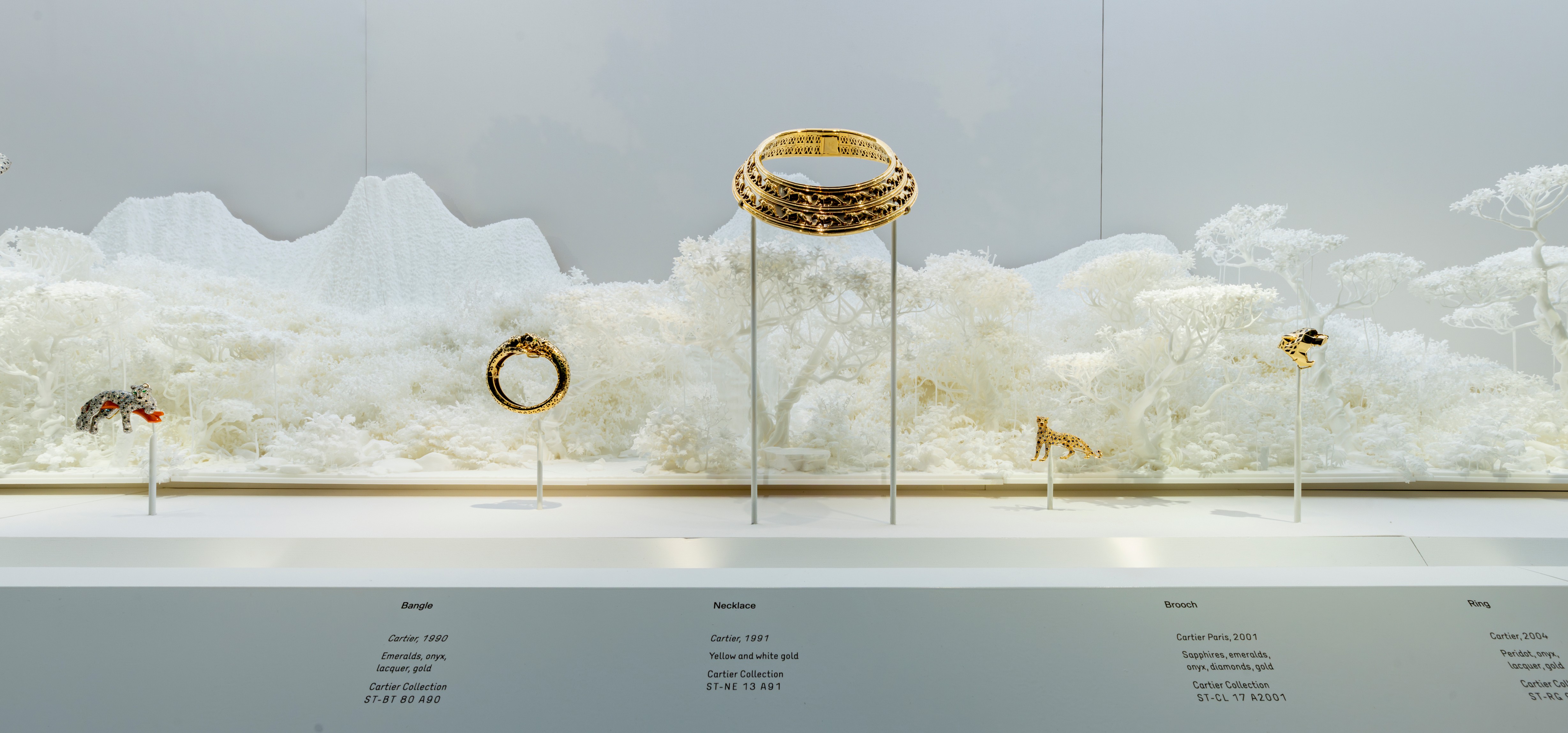Cartier at the V&A London: The must-see luxury exhibition of Autumn 2025



The Cartier exhibition at the V&A London showcases luxury jewellery, craftsmanship, cultural influence, heritage, and the brand’s global legacy
Beyond diamonds and exquisite craftsmanship, Cartier embodies more than just sparkle: it stands for business brilliance and a global empire. The Victoria and Albert Museum in London is currently presenting Cartier, a rare exhibition that explores the Maison’s history. Hosted in The Sainsbury Gallery, V&A South Kensington (Cromwell Road, London, SW7 2RL), it will be on display until 16 November. The exhibition traces Cartier’s evolution from a family atelier in Paris into a cultural and commercial powerhouse, synonymous with elegance, innovation, and lasting influence, spanning from royal courts to red carpets.

Installation view of Cartier at V&A South Kensington (on view until 16 November 2025). Courtesy of the Victoria and Albert Museum, London
We visited the exhibition not just as lovers of design, but as fashion business insiders. In this article, we will investigate what makes Cartier a cornerstone of the global luxury industry and the secret behind its ability to remain both culturally relevant and commercially dominant for over a century.
Inside Cartier at the V&A: Heritage, Luxury Jewellery and Business Brilliance
The last time Cartier unveiled its heritage pieces to a UK audience was nearly three decades ago, in 1997 at the British Museum. As Cartier UK’s Managing Director, Laurent Feniou, told the Financial Times, “We have been working on this exhibition for 10 years.” The wait has been worth it.
More than a celebration of exceptional jewellery, the V&A’s Cartier exhibition is a journey through influence, strategic ingenuity, and the transformative power of cultural craftsmanship.
From Paris Atelier to Global Icon: Cartier’s Rise in Luxury Jewellery
In 1903, three visionary brothers—Pierre, Louis, and Jacques Cartier—redefined what a jewellery house could be. Starting from their Parisian roots, they expanded the business to London and New York, laying the groundwork for a luxury empire.
At the heart of this strategy was not only the use of precious stones but also the art of symbolic storytelling. One of their first international masterpieces was the Manchester Tiara, commissioned for an American heiress marrying into British nobility. More than a luxury item, it marked a turning point—an early expression of Cartier’s ambition to unite tradition with modernity, and aristocracy with aspiration.
.jpg)
Manchester Tiara, Harnichard for Cartier Paris, 1903. Commission for Consuelo, Dowager Duchess of Manchester. Diamonds, gold and silver; the C-scroll at each end set with glass paste. © Victoria and Albert Museum, London
Their approach blended artistic innovation with global foresight. By embracing cross-cultural aesthetics and cultivating a worldwide clientele, Cartier emerged as one of the first true luxury brands to think and operate beyond borders.
Cartier’s Leadership Shift and Resilient Business Strategy
With a brand valuation peaking around $12.5 billion USD between 2016 and 2024 (Statista), Cartier continues to shine as a resilient and adaptive business. The house has proven that heritage does not hinder innovation; in fact, it can be the very foundation for it.
Since 1993, Cartier has been part of the Swiss Richemont Group, one of the world’s largest luxury conglomerates. In a major leadership shift, Louis Ferla was appointed CEO of Cartier in September 2024, having previously served as CEO of the Swiss haute horlogerie Vacheron Constantin (BoF).
 (1).jpg)
Rose clip brooch, Cartier London, 1938. Diamonds and platinum. Vincent Wulveryck, Collection Cartier © Cartier
Ferla, known for his refined strategic vision, steps into the role following the impactful tenure of Cyrille Vigneron, whose leadership helped propel Cartier into a €10 billion brand (Vogue Business) and solidified its status as the red-carpet favourite for the modern elite—connecting the Maison to a new generation of celebrities who represent the new royals of culture and style.
Royalty, Icons, and Red Carpets: Cartier’s Timeless Legacy
Standing before such exquisite craftsmanship—tiaras and brooches glittering as if caught in a beam of light—visiting the V&A’s Cartier exhibition in London feels like stepping into a waking dream.

Installation view of Cartier at V&A South Kensington (on view until 16 November 2025). Courtesy of the Victoria and Albert Museum, London
Since the opening of the London boutique on prestigious New Bond Street in 1909, followed by its flagship store in New York City, Cartier has rapidly attracted the world’s most exclusive clientele.
What truly sets Cartier apart in the history of jewellery is its deep-rooted connection with royalty and aristocracy.
.jpg)
Scroll tiara, Cartier Paris, commissioned for the Countess of Essex in 1902. Diamonds, silver and gold. Nils Herrmann, Collection Cartier © Cartier
The V&A exhibition highlights how Cartier secured its reputation as both “the jeweller of kings and the king of jewellers,” while also reflecting the desires of successive generations.
Cartier’s history is deeply intertwined with the evolution of the monarchy. Royals from Europe, Asian, and the Middle East have turned to Cartier not only for grand ceremonial pieces but also for statements of modernity. In doing so, Cartier helped redefine what royal adornment can look like in the 20th and 21st centuries.
.jpg)
Patiala Necklace, Cartier Paris, special order, 1928 (restored 1999–2002). Commissioned by Bhupinder Singh, Maharajah of Patiala. Diamonds, yellow and white zirconia, topaz, synthetic rubies, smoky quartz, citrine set in platinum. Vincent Wulveryck, Collection Cartier © Cartier
The connection between old-world royalty and modern cultural icons may seem clichéd; still, when the queen of pop, Rihanna, wore Cartier’s Scroll Tiara for the W Magazine cover shoot by Steven Klein in 2016, the stars aligned. Originally commissioned in 1902, the tiara—set with 1,048 diamonds—was first worn by Winston Churchill’s wife at Queen Elizabeth II’s coronation.
This interaction between aristocracy and celebrity has long been central to Cartier’s mystique. The Maison’s creations have consistently captured the imaginations of tastemakers across generations, from Jackie Kennedy wearing her elegant Cartier Tank Cintrée watch in 1969, to Andy Warhol famously stating in 1975, “I don’t wear a Tank to tell the time. In fact, I never wind it. I wear a Tank because it’s the watch to wear.”
Cartier Collaborations: Where Culture Meets Craftsmanship
What sets Cartier apart in the luxury landscape is its connection with culture and contemporary creativity. Long before brand collaboration became a mainstream business strategy, Cartier was already engaging with architects, artists, and photographers to extend its narrative beyond just jewellery.
Today, this approach has evolved into fashion-forward partnerships and a growing footprint beyond jewellery and watchmaking. Cartier’s influence is now evident in art patronage, curated experiences, and lifestyle expansions. The brand’s ability to collaborate while protecting its core identity is a masterclass in brand evolution—an essential case study for students of luxury business and branding.
Cartier’s Legacy: Balancing Heritage and Modern Vision
As Cartier continues to navigate the intersection of heritage and innovation, the upcoming V&A exhibition comes at a crucial moment for the luxury industry. In a market increasingly driven by fast cycles and digital storytelling, Cartier’s emphasis on longevity, exceptionalism, and cultural connectivity offers a compelling counterpoint.
Whether viewed through the lenses of fashion, business strategy, or global cultural diplomacy, Cartier remains not only relevant but also aspirational.
Designing Cartier at the V&A: A Dreamscape of Jewellery and Modern Design
The design of the V&A’s Cartier exhibition, created by British architect Asif Khan MBE, reflects Cartier’s enduring balance between history and modernity.
Described as a “dreamscape,” the space invites visitors to experience Cartier’s artistry and to become captivated by the gems suspended in light, time, and sound.
Standout pieces include the radical Crash Watch (1967), a surrealist timepiece that emerged from Cartier London’s experimental ethos. A London Cartier Crash was hammered by Christie’s in December 2020, for a then-world record of $225,000.
.jpg)
Crash Wristwatch, made by Wright & Davies for Cartier London, 1967. Sapphire, gold, blued steel and leather strap. Vincent Wulveryck, Collection Cartier © Cartier
On a higher level of technical mastery is the fluid Snake Necklace, created for Mexican star María Félix in 1968. This masterpiece of biomorphic design defies traditional jewellery norms and leaves viewers breathless, once again demonstrating Cartier’s ability to adapt to shifting aesthetic tastes.

Installation view of Cartier at V&A South Kensington (12 April - 16 November 2025). Courtesy of the Victoria and Albert Museum, London
Silvia De Vecchi
Librarian, London



